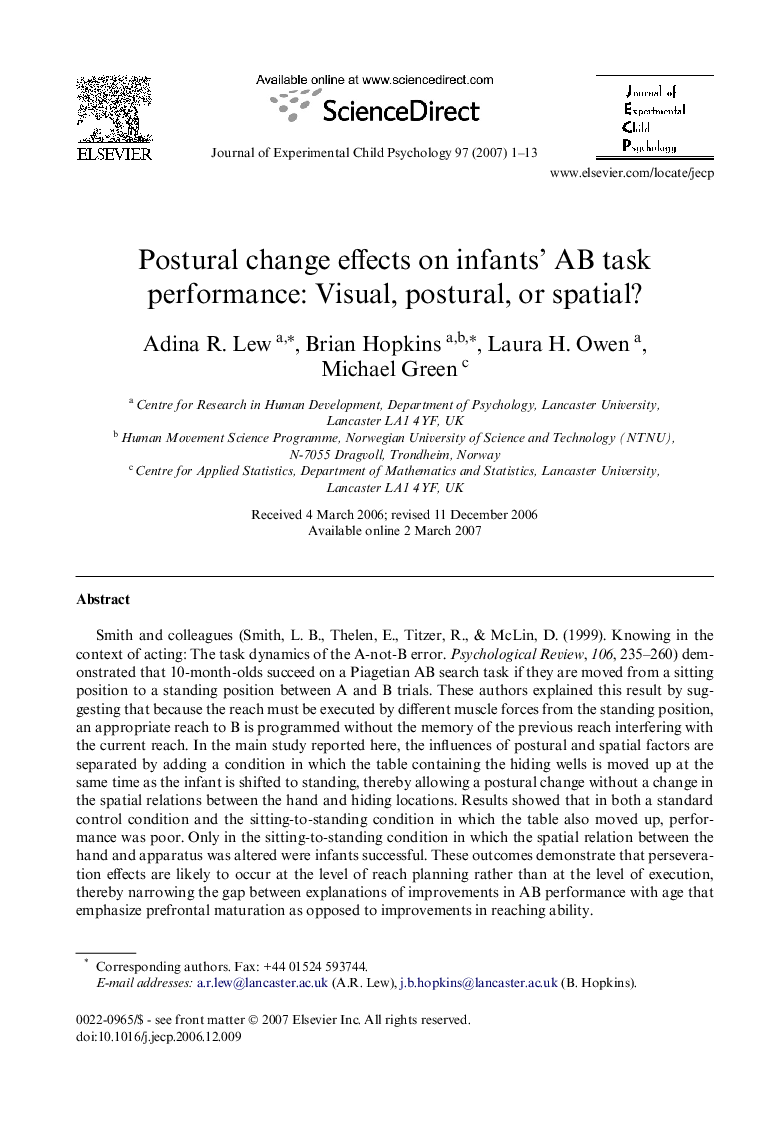| Article ID | Journal | Published Year | Pages | File Type |
|---|---|---|---|---|
| 918824 | Journal of Experimental Child Psychology | 2007 | 13 Pages |
Smith and colleagues (Smith, L. B., Thelen, E., Titzer, R., & McLin, D. (1999). Knowing in the context of acting: The task dynamics of the A-not-B error. Psychological Review, 106, 235–260) demonstrated that 10-month-olds succeed on a Piagetian AB search task if they are moved from a sitting position to a standing position between A and B trials. These authors explained this result by suggesting that because the reach must be executed by different muscle forces from the standing position, an appropriate reach to B is programmed without the memory of the previous reach interfering with the current reach. In the main study reported here, the influences of postural and spatial factors are separated by adding a condition in which the table containing the hiding wells is moved up at the same time as the infant is shifted to standing, thereby allowing a postural change without a change in the spatial relations between the hand and hiding locations. Results showed that in both a standard control condition and the sitting-to-standing condition in which the table also moved up, performance was poor. Only in the sitting-to-standing condition in which the spatial relation between the hand and apparatus was altered were infants successful. These outcomes demonstrate that perseveration effects are likely to occur at the level of reach planning rather than at the level of execution, thereby narrowing the gap between explanations of improvements in AB performance with age that emphasize prefrontal maturation as opposed to improvements in reaching ability.
